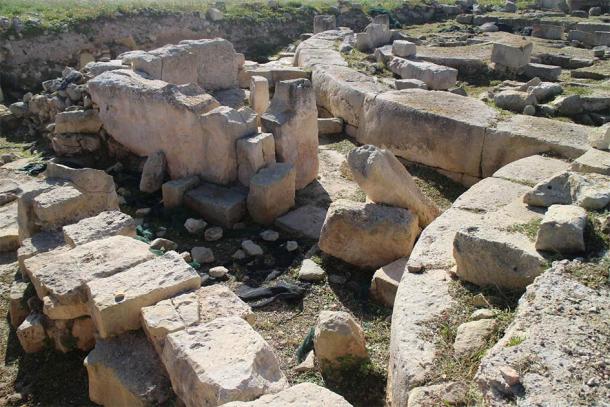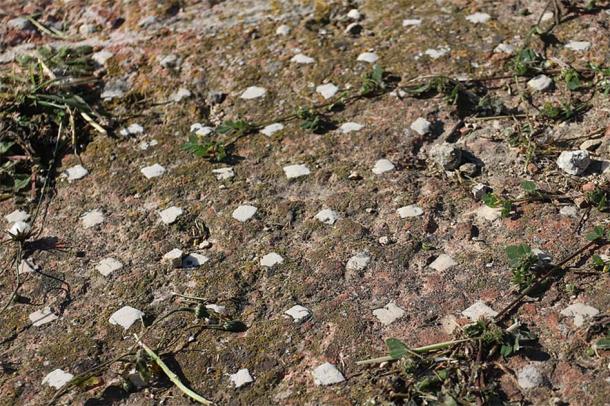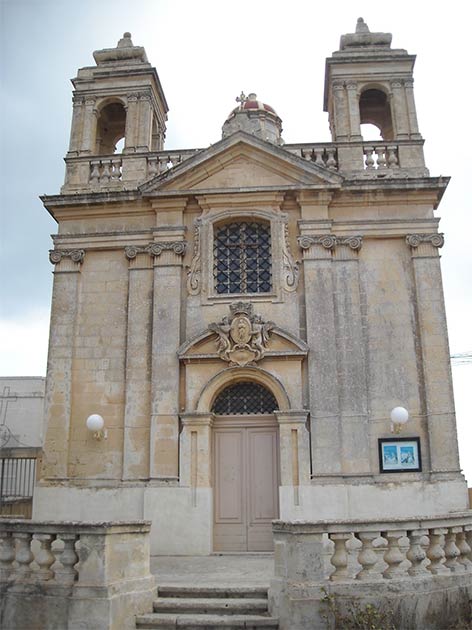Roman Temple Discovered Under a Farmhouse in Malta

Roman Temple Discovered Under a Farmhouse in Malta
Malta lies in the very heart of the Mediterranean and there are many historical ruins and sites that attest to this fact.

There is also another feature added to the list. Archaeologists made an incredible discovery while they were working on a restoration project at a famous temple complex at Tas-Silġ.
They uncovered very important Roman temple foundations, hidden under a farmhouse, which helps archaeologists understand better a site that played a major role in the religious life of the ancient world.
Tas-silg is situated on the south coast of Malta Island. It is a large religious site that has been in use for over 4,000 years, from Stone Age to the Middle Ages. The remains of a megalithic temple and a punic sanctuary are located in Tas-Silġ .

These are believed to have been major pilgrimage sites that attracted the faithful from all over the Mediterranean. A renowned Roman temple was also built at the site, but little of this has survived.
The Roman Temple Under a Farmhouse
An 18th century farmhouse at the site had partially collapsed and experts were restoring it over a four-week period. Specialists from the University of Malta and Heritage Malta investigated the area around the farmhouse to determine if it had any archaeological potential, because it is adjacent to many historic remains . David Cardona, a senior curator, told Times of Malta “The farmhouse was built on a corner of the temples, so the chance of finding remains at the site was always very high, but it was never investigated thoroughly.”
While investigating, the team came across the foundations of the famous Roman temple. The Romans annexed Malta after the Second Punic War and it prospered for many centuries under their rule. Malta was later briefly occupied by the Vandals, before it was ruled by the successors of Rome, the Byzantines.
The foundations are apparently from part of the renowned temple that was dedicated to the Roman God Juno, which was eventually converted into a Byzantine Church.
Tas-Silġ Find Provides Insight on Roman Construction

Maxine Anastasi of the University of Malta stated that “We were able to find a corner wall, complete with opus signinum flooring, that formed part of the temple.” The opus signinum flooring was made of pottery fragments and lime that solidified into a solid flooring.
Anastasi is quoted by Archaeology World as saying that “Instead of building directly on the ground, particularly where the rock was fragile, the Romans would dig trenches and place large limestone ashlar blocks to raise a platform.”

This allowed them to create monumental buildings that were durable. Discovering the foundations is incredibly significant and can help experts to better understand ancient Roman construction techniques.
The discovery of the trenches also allows the experts to imagine the lower levels of the temple. Anastasi says that “the Roman building likely had a large colonnaded peristyle,” a series of evenly spaced columns that held up one part of the roof and formed a porch. This architectural feature was quite common in Greek and Roman temples . It is likely that the structure had a considerable façade.
The Mystery of Tas-Silġ

Archaeology World quotes Anastasi saying, “the multi-period use of the site over thousands of years saw the disappearance of stones that made up the body of the temple’s architecture.” Some of it may have been used in nearby farmhouses. There is even the possibility that some of the stones were possibly used in the Byzantine Church that was later built at Tas-Silġ.
The discovery of the temple may help experts to better understand the complex history of Tas-Silġ and its importance. One of the greatest mysteries of Maltese archaeology is why so many cultures were drawn to Tas-Silġ. No one is really sure why so many cultures regarded the area as sacred and used it as a pilgrimage site.
This may demonstrate the role of tradition in the ancient world and the fact that sites retained their sacred character to successive civilizations, over great spans of time.
During the investigation, the experts also learned much about the historic farmhouse. Those who built the dwelling had constructed it directly over the foundations of the temple.
Archaeology World reports that this is ‘bringing new insight into how locals reacted with the site throughout different periods’. Only one room of the farmhouse has been preserved, although a 3-D model of the building has been developed.
The discovery of the foundations has caused a headache for the local heritage authorities. They were planning on building a heritage center at Tas-Silġ. The unearthing of the temple delays their plan and may oblige them to even re-design the proposed visitor center.